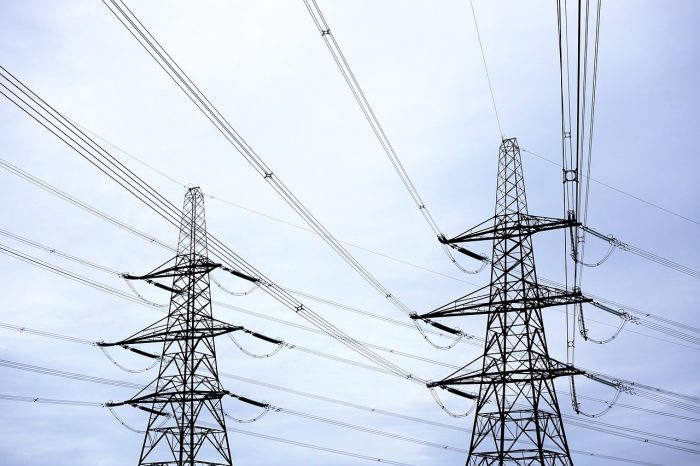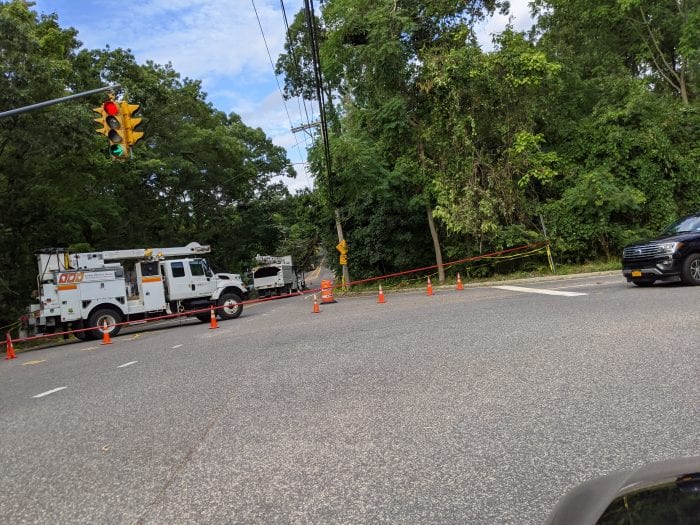The debate over the future of Long Island’s electrical grid picked up last week, Sept. 14, at the Nassau County legislative building, with officials, utility staff and members of the public offering competing visions.
The Legislative Commission on the Future of the Long Island Power Authority is a bipartisan panel of state legislators from Long Island and the Rockaways formed in 2022 to consider the potential municipalization of LIPA after its management agreement with PSEG Long Island expires in December 2025.
Accountability
Chief among the concerns outlined during the hearing was public accountability by members of the LIPA Board.
Under the existing appointment structure, the New York State governor appoints five of the nine members, with the Legislature selecting the remaining four.
New York State Assemblyman Fred Thiele (D-Sag Harbor) suggested this appointment structure could change. “All of those appointments are made by individuals that don’t live on Long Island,” he said. “There has always been the consideration that there should be more local say about the governance of LIPA.”
But achieving that degree of local oversight remains an open question. Michael Menser, associate professor in the Department of Earth and Environmental Sciences at the CUNY Graduate Center, proposed creating a stakeholder advisory committee to make recommendations to the LIPA Board.
“We think a committee stakeholder board — possibly working with an independent research institute or observatory, supporting a fully public utility — could make this transition happen in a way that is speedy, democratic and beneficial both economically and ecologically,” he said.
Ryan Madden, sustainability organizer of the Long Island Progressive Coalition, suggested that the county and city governments within LIPA’s service area should make appointments to the board.
“In some ways, there is an argument that some state appointments make sense as it’s a state entity,” Madden said. “But there should be more input or appointments from local jurisdictions.”
“There could be a situation where the governor gets appointments, the Senate and Assembly get appointments, the Nassau County executive working with the Legislature gets appointments, and the same with Suffolk,” he added.
Governance/management
Thiele said the commission had explored an elective LIPA Board in its first round of hearings but backtracked on this idea, favoring an appointed board instead.
“Especially when you’re talking about [the] National Labor Relations Act,” an appointed board “would better serve to protect labor,” the assemblyman said.
Madden nonetheless supported greater local oversight over the appointment process.
“Our recommendations are just to ensure that there is robust community participation and more local decision-making in whatever appointment process that we determine,” he said.
Tom Falcone, LIPA’s CEO, had attended the Nassau meeting and pushed back on earlier testimony from PSEGLI vice president of external affairs Christopher Hahn, who suggested that the friction between the two utilities creates checks and balances. [See story, “LIPA and PSEGLI wrestle for control over Long Island’s electrical grid,” Sept. 14, TBR News Media website.]
“There aren’t supposed to be checks and balances in management,” Falcone said. “Checks and balances at the management level means a lack of accountability of the vendor. It means the vendor can check what the board wants,” adding, “I think, fundamentally, the problem is that you have one vendor, and they can’t be fired.”
Other input
Luis Vazquez, president and CEO of the Long Island Hispanic Chamber of Commerce, said the chamber does not support the municipalization proposal due to the commission’s perceived lack of public outreach and education.
“Half of the problem is educating our communities and chambers,” he said. “So, if we don’t get the message and we don’t know what we’re voting on, I’d rather just not take a position.”
Guy Jacob, an at-large delegate of the Sierra Club, said his organization’s national, state and Long Island chapters all support municipalization.
“This so-called public-private partnership is unique among municipal electric utilities in the U.S., and the time is now at hand to terminate this decades-long, failed anomaly,” he said. “The moment has come to terminate the tyranny of shareholders over ratepayers.”
Jacob pointed to a perceived lack of alignment between the profit interests of the electric service provider and the LIPA customers, adding that “redundant” management positions within LIPA and PSEGLI add unnecessary costs for utility power.
Conversations over the restructuring of LIPA remain ongoing. To view the commission’s meetings, visit totalwebcasting.com/live/nylipa. Written testimony can be submitted at nylipa.gov/public-input.







